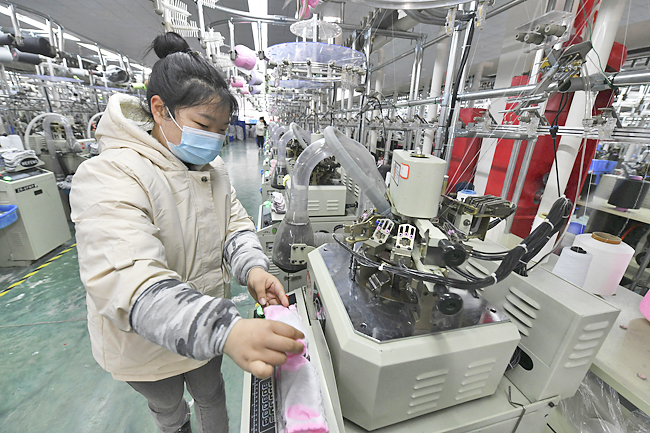BEIJING (AP) – China’s economy contracted in the three months ending in June compared with the previous quarter after Shanghai and other cities shut down to fight coronavirus outbreaks, but the government said a “stable recovery” is under way after businesses re-opened.
The world’s second-largest economy shrank by 2.6 per cent, down from the January-March period’s already weak 1.4 per cent, official data showed yesterday. Compared with a year earlier, which can hide recent fluctuations, growth slid to 0.4 per cent from the earlier quarter’s 4.8 per cent.
Activity was “much weaker than expected”, Rajiv Biswas of S&P Global Market Intelligence said in a report.
Asian stock markets were mixed following the news. Hong Kong was down 0.8 per cent at mid-morning while Shanghai, Tokyo and Seoul gained.
Anti-virus controls shut down Shanghai, site of the world’s busiest port, and other industrial centres starting in late March, fuelling concerns global trade and manufacturing might be disrupted. Millions of families were confined to their homes, depressing consumer spending.
Factories and offices were allowed to start re-opening in May, but economists said it will be weeks or months before activity is back to normal. Economists and business groups said China’s trading partners will feel the impact of shipping disruptions over the next few months.

“The resurgence of the pandemic was effectively contained,” the statistics bureau said in a statement. “The national economy registered a stable recovery.” Data on factory output, consumer spending and other activity suggest overall growth was even weaker than the headline figure, Julian Evans-Pritchard of Capital Economics said in a report.
“Even accounting for June’s strength, the data are consistent with negative year-on-year (y-o-y) growth last quarter,” Evans-Pritchard wrote. “This isn’t the first time that the official gross domestic product (GDP) figures have seemingly understated the extent of an economic downturn.”
The slump hurts China’s trading partners by depressing demand for imported oil, food and consumer goods.
China’s infection numbers are relatively low, but Beijing responded to its biggest outbreak since the 2020 start of the pandemic with a “zero-COVID” policy that aims to isolate every person who tests positive. The ruling party has switched to quarantining individual buildings or neighbourhoods with infections but those restrictions covered areas with millions of people.
Repeated shutdowns and uncertainty about business conditions have devastated entrepreneurs who generate China’s new wealth and jobs. Small retailers and restaurants have closed. Others said they are struggling to stay afloat.
The ruling Communist Party is promising tax refunds, free rent and other aid to get companies back on their feet, but most forecasters expect China to fail to hit the ruling party’s 5.5 per cent growth target this year.
Other major economies report growth compared with the previous quarter, which makes their levels look lower than China. Beijing for decades reported only growth compared with the previous year, which hid short-term fluctuations, but has started to release quarter-on-quarter figures.







